Because of their all-white color, there’s never any doubt that a bird is an egret. But Thailand’s five egret species are all quite similar in appearance so you have to remember certain distinctive features to tell them apart. Luckily, if you have a clear view it’s usually quite easy to do so. Remembering is the hard part, which is why I made these notes.
Little, Intermediate, Great, and Cattle egrets are most common in the Central Plains around Bangkok where they stay year-round. In the rest of Thailand they are seen most often from about August through May, though can often be found at any time. The Chinese Egret is a very rare visitor, and only along the southern coast.
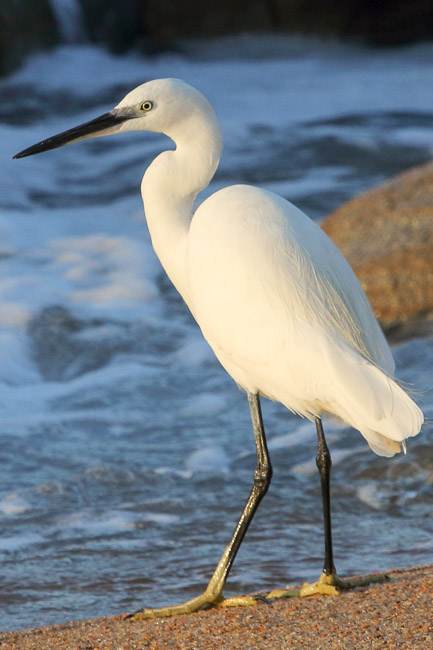
Little Egret
Egretta garzetta – นกยางเปีย nok yang bia
The most common and widespread egret in Thailand. Their black bills and black legs make Little Egrets the easiest egret to identify. Very sociable and often stay together in small flocks.
Bill – black
Legs – black
Feet – yellow
Breeding – Grows nape (two long plumes – the other three common egrets do not have neck plumes and the Chinese Egret nape plums are shaggy), back, and chest plumes.
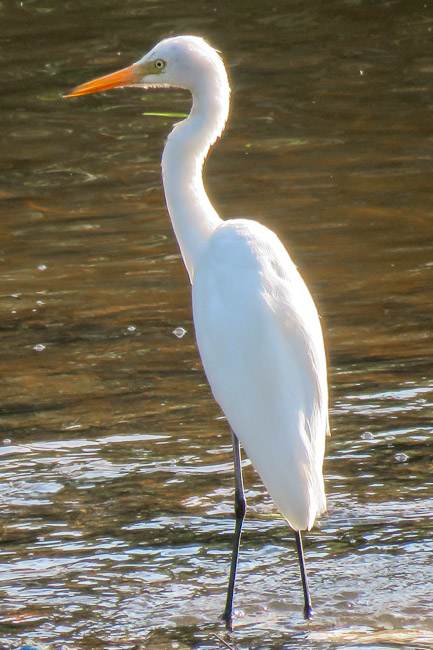
Medium Egret
Ardea intermedia – นกยางโทนน้อย nok yang ton noi
As the name suggests, the Intermediate Egret is between the Little and Great size-wise. Its neck is about as long as its body and it lacks the neck kink that the Great Egret has. Also, its bill is shorter and head thicker than the Great.
Bill – yellow (often a black tip)
Legs – black
Feet – black
Breeding – Bill can turn partially black, mostly on upper mandible. Grows back and chest plumes.
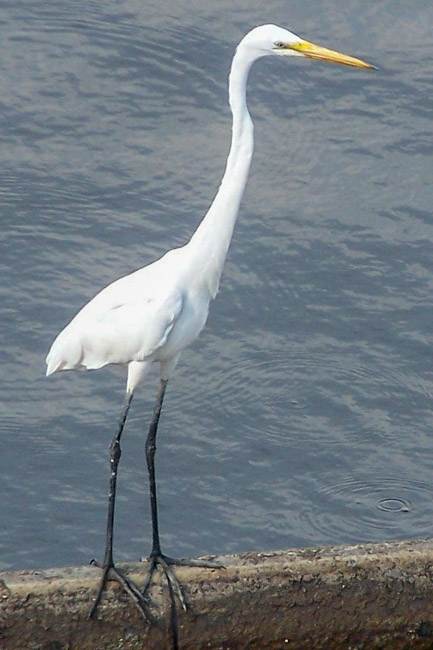
Great Egret
Ardea alba modesta – นกยางโทนใหญ่ nok yang ton yai
The Great Egret is the largest of the bunch. Its neck is one and a half times the length of its body, much longer than the other egrets, and is significantly more curved than the Intermediate with a distinct kink visible when its neck is not fully extended. An easily noticeable line extends from the bill to well past the eye.
Bill – yellow (sometimes a black tip)
Legs – black
Feet – black
Breeding – Bill changes to black, legs and sometimes feet to red, facial skin to vivid blue-green. Grows back and chest plumes.
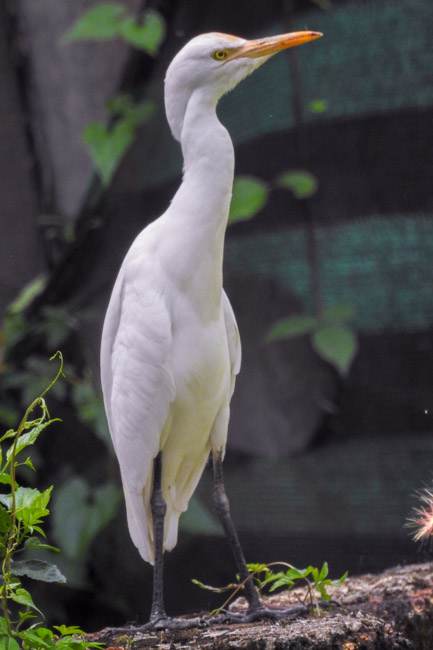
Eastern Cattle Egret
Bubulcus coromandus – นกยางควาย nok yang kwai
The smallest of the egrets, with significantly shorter neck, bill, and legs relative to the others. The neck is not only shorter, but also thicker and cattle egrets frequently sit hunched with their necks completely tucked in. Aptly named, cattle egrets spend much of their days near cows and buffalo (and nowadays tractors) eating the insects (primarily locust, grasshoppers, and crickets) and other small animals (they eat many frogs when nesting) they stir up. Despite the reputation, they rarely pick ticks off animals. It’s the only egret that regularly feeds in pastures and grasslands, though it can sometimes be found in wetlands and the other egrets will occasionally visit pastures. Often seen in large groups.
Bill – yellow
Legs – black
Feet – black
Breeding – Head, neck, and back turn rusty-orange. Bill, legs, and feet briefly turn red. Grows nape, back, and chest plumes.
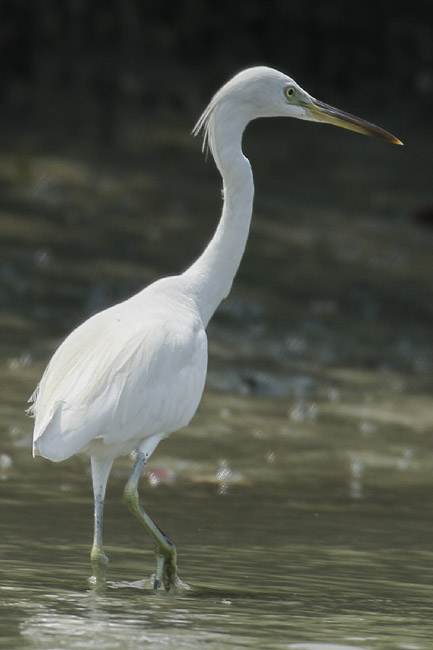
Chinese Egret
Egretta eulophotes – นกยางจีน nok yang jeen
Similar in size and appearance to the Little Egret, though the feet and legs are a dead giveaway. The Pacific Reef Heron (Egretta sacra), which also is found only along the coast, usually can’t be confused with an actual egret because of its dark grey color, but it has an all-white “adult white morph non-breeding” form that looks very similar to the Chinese Egret. The two can best be separated by the Pacific Reef Heron’s yellower legs and thinner neck.
Bill – mottled, mostly black with yellow at base of lower mandible
Legs – green
Feet – green
Breeding – Does not breed in Thailand.
Little Egret photo by Alandmanson from Wikimedia Commons.
Intermediate Egret photo by Selvaganesh17 from Wikimedia Commons.
Great Egret photo by Kclama from Wikimedia Commons.
Eastern Cattle Egret photo by Afsarnayakkan from Wikimedia Commons.
Chinese Egret photo by TonyCastro from Wikimedia Commons.
5 thoughts on “How to Identify Thailand’s Egrets”
I’ve seen 2 kinds of Egrets. The cattle Egret, and then there’s the crane that always visits the banana tree and coconut tree gardens, and they come in flocks sometimes. This ks happening in Ko Yao Noi, Phang Nga province.
I have been photographing Egrets & Stotks in the areas rice paddies and yesterday, in an ajoining paddy, there were a number of black egret size birds. Unfortunately too far away to photograph – any ideas please ?
Hello. If you are in the coastal south, it’s probably a Pacific Reef Heron. Up here in Isan, Asian Openbill can get pretty grey and maybe from far away could have looked black? That would be my best guess.
we just saw a flock of white egrets flying over Udon Thani city. Our bird guide wasnt too clear for me so i googled and found this EXCELLENT article describing very clearly the differences between Thailand egrets. The egrets were the size more or less of storks, rather impressive, so my guess was they were Greater Egrets, but next time i will take a better look at the lenght of their necks.
Thank you. They are easier to identify when they are on the ground than when they are in the air.